Isoform-specific and ubiquitination dependent recruitment of Tet1 to replicating heterochromatin modulates methylcytosine oxidation
- PMID: 36056023
- PMCID: PMC9440122
- DOI: 10.1038/s41467-022-32799-8
Isoform-specific and ubiquitination dependent recruitment of Tet1 to replicating heterochromatin modulates methylcytosine oxidation
Erratum in
-
Author Correction: Isoform-specific and ubiquitination dependent recruitment of Tet1 to replicating heterochromatin modulates methylcytosine oxidation.Nat Commun. 2023 Jan 23;14(1):369. doi: 10.1038/s41467-023-36067-1. Nat Commun. 2023. PMID: 36690627 Free PMC article. No abstract available.
Abstract
Oxidation of the epigenetic DNA mark 5-methylcytosine by Tet dioxygenases is an established route to diversify the epigenetic information, modulate gene expression and overall cellular (patho-)physiology. Here, we demonstrate that Tet1 and its short isoform Tet1s exhibit distinct nuclear localization during DNA replication resulting in aberrant cytosine modification levels in human and mouse cells. We show that Tet1 is tethered away from heterochromatin via its zinc finger domain, which is missing in Tet1s allowing its targeting to these regions. We find that Tet1s interacts with and is ubiquitinated by CRL4(VprBP). The ubiquitinated Tet1s is then recognized by Uhrf1 and recruited to late replicating heterochromatin. This leads to spreading of 5-methylcytosine oxidation to heterochromatin regions, LINE 1 activation and chromatin decondensation. In summary, we elucidate a dual regulation mechanism of Tet1, contributing to the understanding of how epigenetic information can be diversified by spatio-temporal directed Tet1 catalytic activity.
© 2022. The Author(s).
Conflict of interest statement
The authors declare no competing interests.
Figures
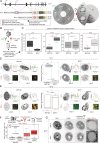
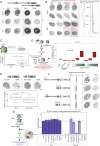


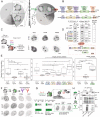
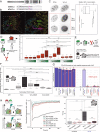
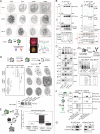
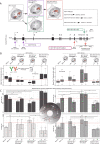
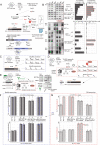

Similar articles
-
Methyl-CpG binding domain protein 1 regulates localization and activity of Tet1 in a CXXC3 domain-dependent manner.Nucleic Acids Res. 2017 Jul 7;45(12):7118-7136. doi: 10.1093/nar/gkx281. Nucleic Acids Res. 2017. PMID: 28449087 Free PMC article.
-
Optochemical Control of TET Dioxygenases Enables Kinetic Insights into the Domain-Dependent Interplay of TET1 and MBD1 while Oxidizing and Reading 5-Methylcytosine.ACS Chem Biol. 2022 Jul 15;17(7):1844-1852. doi: 10.1021/acschembio.2c00245. Epub 2022 Jun 16. ACS Chem Biol. 2022. PMID: 35709470 Free PMC article.
-
MYC deregulates TET1 and TET2 expression to control global DNA (hydroxy)methylation and gene expression to maintain a neoplastic phenotype in T-ALL.Epigenetics Chromatin. 2019 Jul 2;12(1):41. doi: 10.1186/s13072-019-0278-5. Epigenetics Chromatin. 2019. PMID: 31266538 Free PMC article.
-
Epigenetic Function of TET Family, 5-Methylcytosine, and 5-Hydroxymethylcytosine in Hematologic Malignancies.Oncol Res Treat. 2019;42(6):309-318. doi: 10.1159/000498947. Epub 2019 May 3. Oncol Res Treat. 2019. PMID: 31055566 Review.
-
Mechanisms that regulate the activities of TET proteins.Cell Mol Life Sci. 2022 Jun 15;79(7):363. doi: 10.1007/s00018-022-04396-x. Cell Mol Life Sci. 2022. PMID: 35705880 Free PMC article. Review.
Cited by
-
The Role of DNMT Methyltransferases and TET Dioxygenases in the Maintenance of the DNA Methylation Level.Biomolecules. 2024 Sep 4;14(9):1117. doi: 10.3390/biom14091117. Biomolecules. 2024. PMID: 39334883 Free PMC article. Review.
-
Epigenetic regulation of DNA repair gene program by Hippo/YAP1-TET1 axis mediates sorafenib resistance in HCC.Cell Mol Life Sci. 2024 Jul 5;81(1):284. doi: 10.1007/s00018-024-05296-y. Cell Mol Life Sci. 2024. PMID: 38967794 Free PMC article.
-
Epigenetic control of skeletal muscle atrophy.Cell Mol Biol Lett. 2024 Jul 8;29(1):99. doi: 10.1186/s11658-024-00618-1. Cell Mol Biol Lett. 2024. PMID: 38978023 Free PMC article. Review.
-
Transcriptional Patterns in Stages of Alzheimer's Disease Are Cell-Type-Specific and Partially Converge with the Effects of Alcohol Use Disorder in Humans.eNeuro. 2024 Oct 16;11(10):ENEURO.0118-24.2024. doi: 10.1523/ENEURO.0118-24.2024. Print 2024 Oct. eNeuro. 2024. PMID: 39299805 Free PMC article.
-
Non-canonical functions of UHRF1 maintain DNA methylation homeostasis in cancer cells.Nat Commun. 2024 Apr 5;15(1):2960. doi: 10.1038/s41467-024-47314-4. Nat Commun. 2024. PMID: 38580649 Free PMC article.
References
Publication types
MeSH terms
Substances
LinkOut - more resources
Full Text Sources
Other Literature Sources
Molecular Biology Databases
Research Materials

